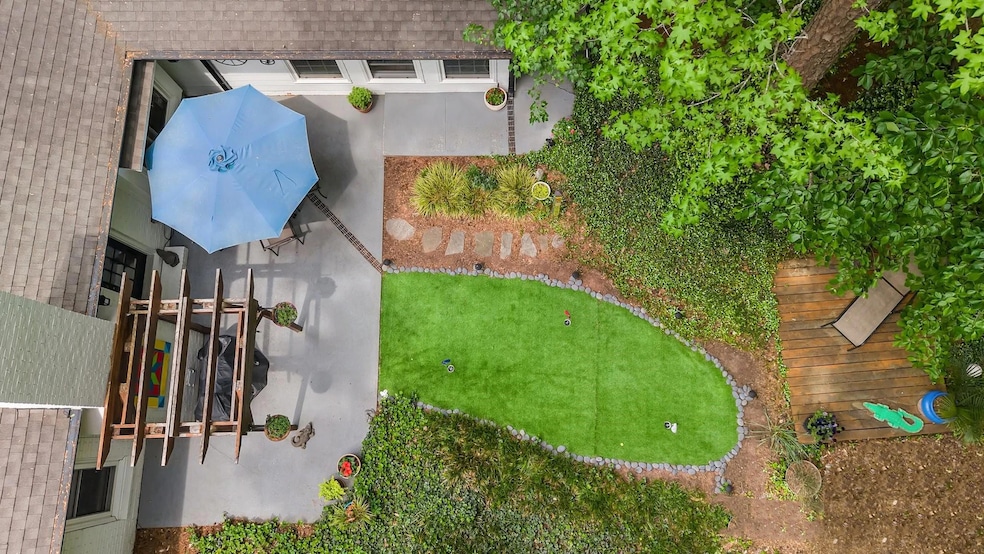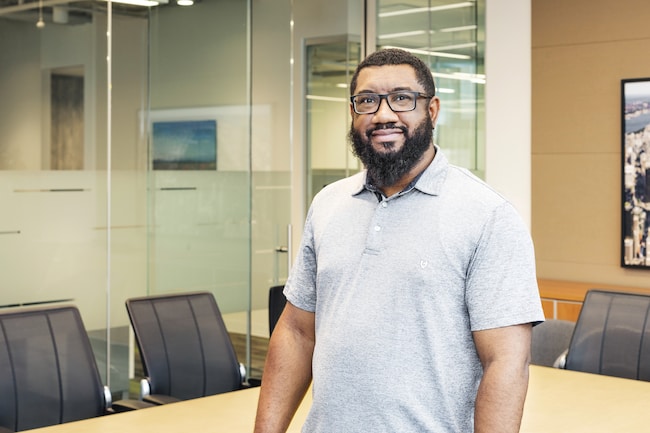Some homeowners have taken puttering around the house to a whole new level, installing backyard golf greens to shore up their short games.
It's an amenity fans of the 2025 PGA Tour would long to have, but what kind of commitment — and bank account — does it take? As the PGA Championship tees off at Quail Hollow Golf & Country Club in Charlotte, North Carolina, this week, we looked at the cost of installing and maintaining personal putting greens.
A three-bedroom home with a putting green made of Bermuda grass recently went under contract in Bluefield, Virginia. The home’s previous owner was “a true golf lover,” and he and his wife are empty nesters who wanted to downsize, the listing agent said. The home was listed for $269,000.
“The story of this green is it used to be a pool,” Sara Baker, an agent with Home by Hicks, said in an interview. “That’s why it’s round-shaped. They filled it in, and it was a fun little activity for when they barbecued.”
The previous owners now live in a smaller property in Bluefield that's connected to the Fincastle country club, Baker said. “He goes right out his door and jumps onto a golf cart. He’s living his best life.”
If this year's tournament performances by Americans Scottie Scheffler and Justin Thomas have inspired you to install a putting green in your backyard, just know that it will cost hundreds, even thousands of dollars, to maintain that amenity. Experts in turf management said the costs differ depending on whether the green is made of artificial or real grass.
Installing an artificial green will run between $1,500 and $16,000, depending on size, labor costs and added features, such as slopes, bunkers or a rough. Real grass starts at about $5,000 and can go up to $25,000, depending on the square footage and features, they said.
Artificial turf is the more cost-effective choice
Maintaining synthetic or artificial turf is much easier and less expensive because the material is not real grass that needs to be mowed frequently, the experts said.

"The biggest thing is you'll want to brush it and top-dress it," Tony Frisella, a Missouri-based landscaper who installs putting greens across St. Louis, said in an interview. Topdressing is a sand-like material that homeowners can buy and dump onto the turf. The material keeps the surface smooth and helps with drainage.
Homeowners also need to buy a power broom to brush the surface, which helps lift the grass fibers and distribute the topdressing. Brush and top-dress once a year or "twice a year max if you're a heavy user," Frisella said.
Aside from brushing and top-dressing, homeowners must spray what's known as "infill," an antimicrobial liquid, on the surface. Infill is what keeps the green looking lush, Frisella said.
"Sometimes these putting greens are in a little shade or they take on tree clutter like pollen or leaves that sometimes will lead to them getting some mold or moss on them," he said. "And there’s a product you spray on to get that removed."
An infill treatment should be done once a year and costs around $400, Frisella said. That expense combined with topdressing and brushing, and a homeowner can easily pay $650 a year to hire someone to maintain the synthetic turf.
If you go the inexpensive route and decide not to spray and get rid of mold, you'll notice it as soon as you try to putt, said Chas Schmid, a horticulture researcher at Oregon State University who studies turfgrass on lawns and golf courses, said in an interview.
"If you're used to a really smooth ball roll, you may get bumps," Schmid said, "but as long as you keep up with the maintenance on it, a synthetic green should last you 10 to 15 years."
Natural greens can use a variety of grasses
Homeowners with real grass on their putting greens — like the home in Bluefield, Virginia — typically have a combination of bent grass, zoysia or fescue, Frisella and Schmid said. Those species of grass require fertilizer treatments, pesticide sprays, constant watering and aerating twice a year — on top of the same brushing and topdressing required for artificial turf, they said.

"And you'll have to mow it two or three times a week," Frisella added.
Real grass must be cut with a specialized, reel-style mower to the height of an eighth of an inch or lower, Schmid said. Cutting grass that low means the roots are more susceptible to catching fungus, particularly dollar spot, Schmid said.
Dollar spot is caused by a fungus characterized by "small, round, bleached-to-straw-colored spots," according to the University of Massachusetts Amherst Extension.
That means homeowners must perform fertilizer treatments on the surface twice a year, which is between $300 and $500, depending on the company that handles the task, Frisella said.
"Most of these homeowners are letting someone else do that," he said. "These greens are not in an obscure part of the yard. You want them to look nice."
Homeowners need the putting green sprayed with pesticides at least once a year for a $100 to $300 price tag, Frisella said.
Someone must also come in twice a year to aerate the grass or poke holes in the surface so air, water and treatments can better reach the soil. Frisella said that's about $75 to $150 per treatment.
Brushing and top-dressing real grass will cost $200 to $500 a year, Frisella said.
He said homeowners should also factor in the additional cost of watering that patch of grass more often than a regular lawn.
"So, you're looking at — all in — probably at the low end $6,000 to $8,000 a year," he said, or "up to $20,000, depending on how much grass you have."
When it comes to tending a personal, real grass putting green, there are no mulligans.

